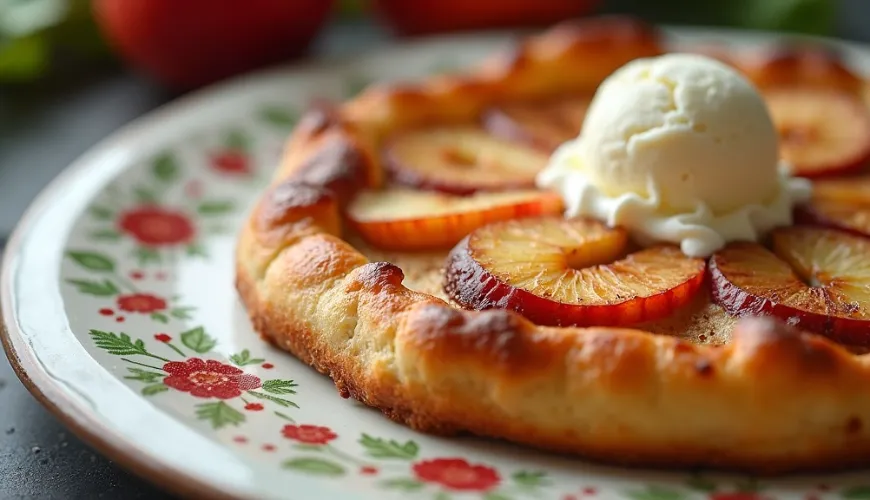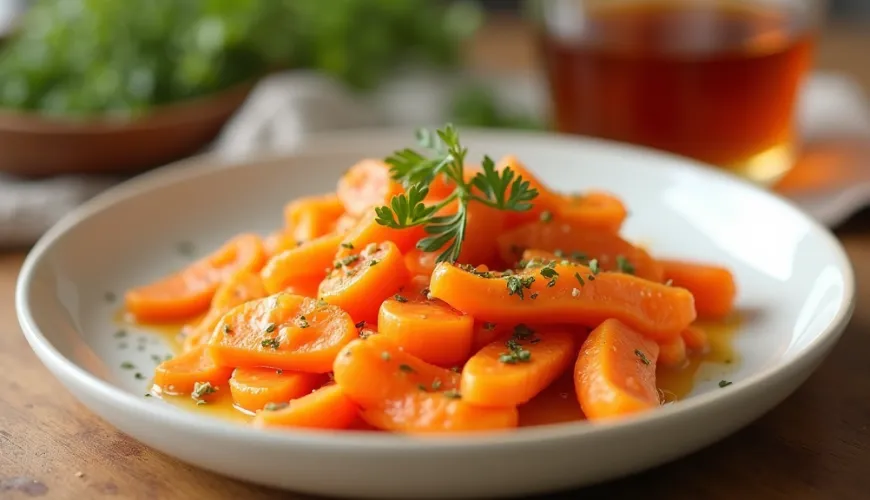
Discover the secret of the Flammkuchen recipe and enjoy

Savory Flammkuchen Tart - Recipe for a Crispy Delight from Alsace
Flammkuchen — a novelty for some, a favorite treat for others. Whether you're encountering this savory tart for the first time or know it from travels in Germany or France, one thing is certain: Flammkuchen is a dish that will win over your heart and taste buds. Its thin, crispy crust, creamy base, and delicious combination of onions and bacon make it the perfect dish for shared dinners, informal celebrations, or cozy evenings with wine.
But what exactly is Flammkuchen? Where does it come from? And how can you make it at home? The answers aren't just about food — they're about the story, tradition, and simplicity that often taste best in the kitchen.
What is Flammkuchen and Where Does It Come From?
Flammkuchen, often called Alsatian savory tart in Czech, originates from the French-German border — specifically Alsace, but it also holds a strong place in southern Germany. The name "Flammkuchen" literally means "flame cake," as it was traditionally baked in a very hot oven, placed inside for only a few minutes, often on a wooden board.
This tart was originally used as a way to test the oven's temperature before baking bread. If the Flammkuchen was baked to a crisp and turned golden within a few minutes, the oven was ready. Today, it is a popular dish in bistros, at markets, and increasingly on home tables.
Flammkuchen is often compared to pizza, but don’t be fooled — it's significantly lighter, thinner, and milder in taste. Instead of a tomato base, sour cream or crème fraîche is used, cheese is not a necessity, and the combination of bacon and onion has become a classic that can be further developed with endless variations.
Recipe for Flammkuchen - Simple and Versatile
The key to success is the dough. Unlike leavened pizza dough, this is unleavened dough, which means quick preparation without waiting. You only need a few common ingredients:
For the dough:
- 250 g plain flour
- 125 ml water
- 2 tablespoons olive oil
- A pinch of salt
For the classic Alsatian topping:
- 150 g crème fraîche or sour cream
- 1 medium onion, sliced into thin rings
- 100 g quality English bacon or pancetta, cut into thin strips
- A pinch of salt and pepper
- Optional: nutmeg or a pinch of thyme
The process is straightforward: work the ingredients into a smooth dough, roll it out as thinly as possible — almost transparent — and transfer it to baking paper. Then spread with cream, layer onions and bacon, season, and bake.
It bakes at the highest possible temperature, ideally 250 °C, for only 7–10 minutes. The edges must be golden and crispy, while the center should remain soft. The advantage is that Flammkuchen can be served immediately without waiting for it to cool.
Variations You'll Love
While the classic savory tart with onions and bacon is a timeless certainty, there are a number of creative variations that take Flammkuchen to new flavors. In Alsace, it's not uncommon to encounter versions with goat cheese and honey, or with pears and blue cheese. In Germany, experiments include spinach, sun-dried tomatoes, mushrooms, or even sauerkraut.
An interesting option is the sweet version of Flammkuchen, which uses sour cream, apples, cinnamon, and perhaps a drop of Calvados. It's served as a dessert, often with a scoop of vanilla ice cream.
Flammkuchen is actually perfectly adaptable. Want a vegetarian version? Replace the bacon with grilled vegetables and crumbled feta cheese. Prefer intense flavors? Add gorgonzola, red onion, and arugula. The simplicity of the base encourages culinary experimentation.
A Kitchen Story - How Flammkuchen Brings People Together
At a garden party in Prague's Vinohrady a few years ago, several friends gathered. The main attraction wasn't the grill, but homemade Flammkuchen. The hostess brought out a large wooden board with several versions: classic with bacon, vegetarian with spinach and goat cheese, and even one with apples and raisins. People tore off pieces of tart, tasted, and shared. No one worried about cutlery, no one was in a hurry. It was a dinner that naturally turned into a long evening full of conversation and laughter. And that's exactly what makes Flammkuchen so special – its informality, sharing, and lightness.
Why is Flammkuchen Ideal for an Eco-Conscious Kitchen?
In a time when more and more people emphasize sustainable living, Flammkuchen finds its place in the so-called eco-kitchen. Thanks to its simple composition and quick preparation, it avoids energy-intensive processes. Moreover, it does not require exotic ingredients — most of the ingredients can be bought in organic quality from local producers or even grown at home.
Crème fraîche can easily be replaced with a plant-based alternative, and the dough can be made gluten-free using buckwheat or rice flour. And if you prefer a vegan version, just skip the bacon and add smoked tofu, sautéed mushrooms, or fermented cashew-based cheese.
In this way, Flammkuchen becomes not only a gastronomic experience but also part of a thoughtful approach to eating that respects health, the planet, and the local economy.
Flammkuchen in Restaurants and on the Streets
In recent years, Flammkuchen has become a popular dish at European street food festivals and the food truck scene. In Berlin or Strasbourg, you will often see a long line of people waiting for a piece of this tart, which is prepared right before their eyes in a special oven. This phenomenon is slowly making its way into Czech cities.
Some cafes and bistros include Flammkuchen in their regular menu as an alternative to pizza or quiche. It’s a dish that doesn’t burden but still satisfies. Moreover, it’s a great opportunity to offer guests something unique that they will love.
Savory Flammkuchen Tart - Tradition with a Modern Taste
Perhaps this is why Flammkuchen appeals to today's generation of home cooks. It offers authenticity without unnecessary complication, tradition without the weight of formality. It’s a dish easily adapted to dietary needs, seasonal ingredients, and the current mood.
When someone asks what to cook when there isn't much time but wants to delight family or friends, the answer could be Flammkuchen. A few basic ingredients, a bit of care, an oven preheated to the maximum — and within a quarter of an hour, you have a dish on the table that everyone will remember.
And as German chef and author of a cookbook on Alsatian cuisine Bernd Neuner says: "Flammkuchen is not just a recipe. It's a way to return to the most basic — the taste of sharing, tasting, and being together."
So why not try it tonight?
Looking for inspiration on how to prepare Flammkuchen in a plant-based version or with local ingredients? At Ferwer.cz, you’ll find products for a sustainable home and kitchen — from organic flour, through plant-based cream alternatives, to eco-friendly baking papers. Bake a tart that's not only delicious but also planet-friendly.

